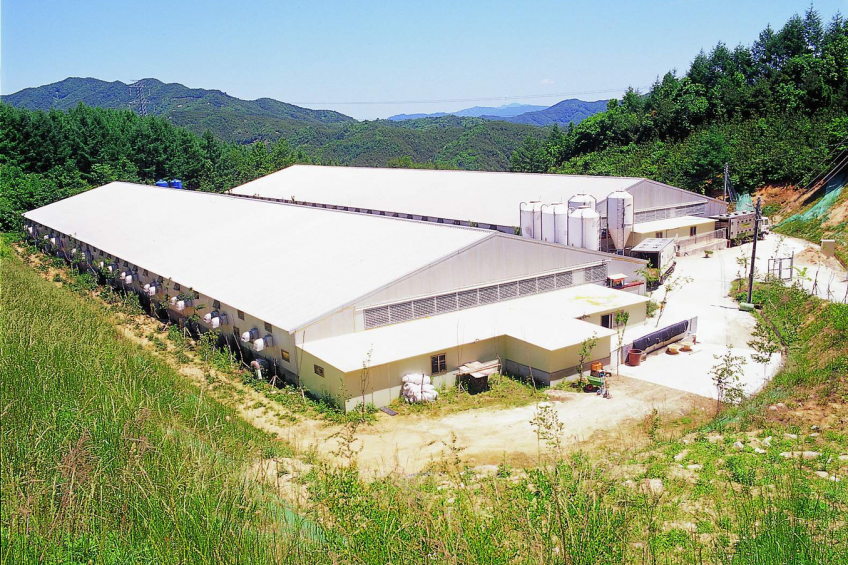South Korea back on track after FMD crisis

Good news: With large and structural investments, South Korea has overcome a series of Foot-and-Mouth Disease outbreaks. Bad news: For pork exporters, Korea’s demand for pork is going down again. Especially the EU seems to suffer.
Perhaps it is a touch morbid for South Korea, but the Foot-and-Mouth crisis that hit the country in 2010 in three waves was the onset for some profitable months for pork exporters elsewhere around the globe. South Korea was forced to cull approximately one third of its total pig inventory, with total numbers of pig slaughterings skyrocketing to 10.84 million in 2011 (see Table 1). As a result, pork imports grew strongly in the following year.
All pork exporting countries profited off the growing demand from the Korean peninsula, increasing abruptly to 640,000 tonnes in 2011 – a rise of 68%. From the European Union, exports grew to almost 194,000 tonnes (see Figure 2). Also the United States, Canada and Chile, proved to be ready to take a piece of this new market caused by FMD. The most notable exporter among these was the United States – exporting up to 31% more meat to South Korea, topped by another rise of 33% one year later.
Now, two years later, the situation has changed drastically once more. These days, pork exporting countries are fighting for their share of the South Korean market. In a relatively short timeframe, South Korea managed to get its pig inventory back on pre-FMD-levels, reducing the dependence on pork imports, see Table 2. According to estimates, this year 30,000 tonnes less imports would be needed in comparison to 2012 – and even 120,000 tonnes less than in 2011.
And that is not all. In order to control the pork deficit and to maintain meat price levels, the Korean government abolished import levies on pork. In 2012, therefore, 120,000 tonnes of pork could be imported free of taxation – in the year prior to that even 260,000 tonnes. The tax-free imports have been used so well, that Korean storage facilities are still fully packed. Pork in Korea – 2013 is characterised by high domestic production and large supplies.
Special market
Especially the European Union (EU) countries felt the consequences. In 2012, the EU exported 57,000 tonnes less meat to Korea than in its best year, 2011. The year 2013 has been even worse, reveal figures of the German meatpacker Westfleisch. In January 2013, the German exports to South Korea dropped by 1,000 tonnes to 2,000 tonnes. The Netherlands saw a 500 tonne year-on-year decrease, exporting 900 tonnes in the same month. The United States, however, performed better with an export rise of 3,500 tonnes.
From Europe, South Korea imported only one specific product: Meaty, fatty belly parts. These are being sent chilled to Asia and are being used in specific meals. At Westfleisch, of every pig belly, about 8 kg is transported to South Korea. Exporting about 1,000 tonnes less means that Germany cannot export bellies of about 125,000 pigs – no alternative markets are available for bellies, South Korean style.
The reduced demand from South Korea does not mean that the country completely disappears from the international trade stage. Quite on the contrary, it is estimated that the country will import 520,000 tonnes of pork this year – which would rank South Korea as global number five with regard to pork imports, after Japan, Russia, China and Mexico.
It remains to be seen whether South Korea will remain very dependent on imports in the future. Hans Hoevink, area sales manager at PigTek, points to growing consumption as well as domestic production growth. He says many smaller farms, having less than 200 sows, have shut up shop – and so have farms that do not show any profitable performance. Larger family farms and integrators, however, are taking over production. These farms work with better housing facilities, pay more attention to hygiene – resulting in higher production figures.
For the imports that remain, the United States and Chile have a trade advantage in the years to come, when compared to the European Union. European exporters currently pay 18.4% import duties for chilled bellies. The US and Chile only pay 8.4% and 2.4% respectively. In 2014, tariffs for bellies in from both the US as well as Chile will go to 0%, as has been agreed in Free Trade Agreements. For the EU, however, the tariffs will be broken down bit by bit – to 0% in 2021.
Vaccination programme
Last but not least – since 2010, no more outbreaks of FMD have been reported in South Korea. But how likely is it that FMD will return to South Korea?
Although one can never rule out
infection, chances have been lowered. After the last and most vehement FMD wave, in November 2010, South Korea has started a vaccination programme against the virus, using large numbers of vaccines from abroad as well. Ever since, FMD vaccination has become mandatory for pork producers, with local authorities checking the process regularly.
PP
Helping Korea’s sow herd to grow after FMD
Similarly to pork imports, the Foot-and-Mouth Disease outbreaks have also had a strong impact on the international market for breeding stock. With
one-third of South Korea’s inventories culled, demand for new breeding stock was enormous.
“Huge compensations were
paid to farmers,” tells Jim Long, president of Genesus, a Canadian-based purebred genetics supplier. “Millions of dollars in compensation were paid for the losses of the pigs. Some of the producers did re-invest this money.”
The breeder, headquartered in Oakville, Manitoba, took care of a large part of the repopulation of Korea’s sow herd, which amounted to 1 million before the FMD outbreak. In total, the company has shipped about 10,000 registered GGP purebreds to South Korea since then. “GGP purebreds were delivered at the quarantine facility right near Incheon airport,” Long tells. “The animals were blood tested and had to stay there for 30 days.”
Genesus started business in South Korea about six years prior to the outbreak of FMD. The
establishment of this brand presence helped Genesus to become pivotal in the rebuilding of the local sow herd. “The government has supported the farmers to obtain registered purebreds,” Long adds. Quotes for importing pigs were temporarily suspended in order to repopulate quickly.
The situation in South Korea has stabilised in recent months, Long tells, as in the last few months, ‘only’ 500 purebred breeding stock have been sent to South Korea. The days of making money are over in more than one respect, he adds. Where remaining pork producers in the climax of the FMD crisis managed to get prices up to US$300-400 per pig sold to the market, nowadays the situation is reversed, as producers lose up to US$90 per pig.











